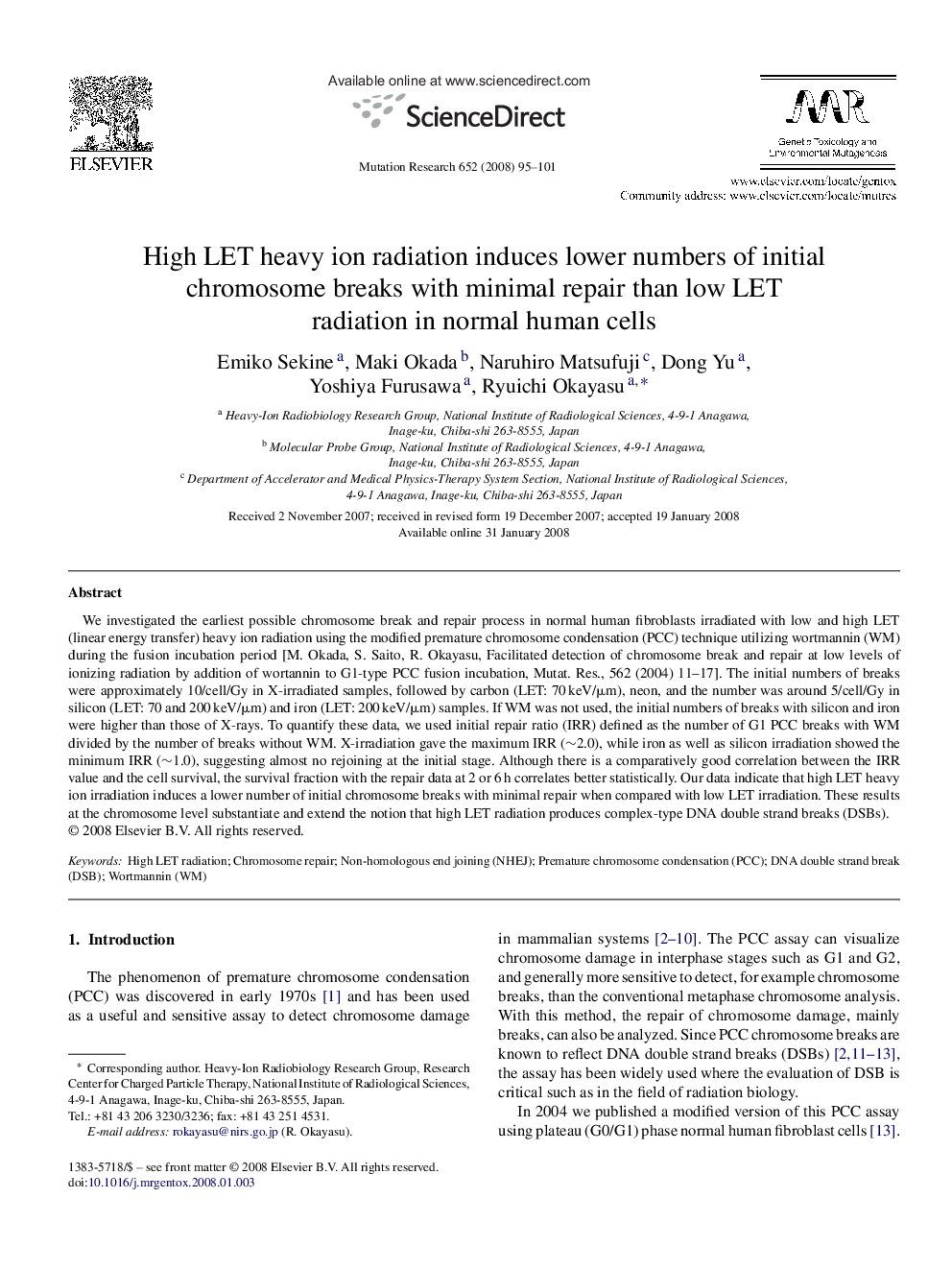| کد مقاله | کد نشریه | سال انتشار | مقاله انگلیسی | نسخه تمام متن |
|---|---|---|---|---|
| 2148982 | 1089592 | 2008 | 7 صفحه PDF | دانلود رایگان |

We investigated the earliest possible chromosome break and repair process in normal human fibroblasts irradiated with low and high LET (linear energy transfer) heavy ion radiation using the modified premature chromosome condensation (PCC) technique utilizing wortmannin (WM) during the fusion incubation period [M. Okada, S. Saito, R. Okayasu, Facilitated detection of chromosome break and repair at low levels of ionizing radiation by addition of wortannin to G1-type PCC fusion incubation, Mutat. Res., 562 (2004) 11–17]. The initial numbers of breaks were approximately 10/cell/Gy in X-irradiated samples, followed by carbon (LET: 70 keV/μm), neon, and the number was around 5/cell/Gy in silicon (LET: 70 and 200 keV/μm) and iron (LET: 200 keV/μm) samples. If WM was not used, the initial numbers of breaks with silicon and iron were higher than those of X-rays. To quantify these data, we used initial repair ratio (IRR) defined as the number of G1 PCC breaks with WM divided by the number of breaks without WM. X-irradiation gave the maximum IRR (∼2.0), while iron as well as silicon irradiation showed the minimum IRR (∼1.0), suggesting almost no rejoining at the initial stage. Although there is a comparatively good correlation between the IRR value and the cell survival, the survival fraction with the repair data at 2 or 6 h correlates better statistically. Our data indicate that high LET heavy ion irradiation induces a lower number of initial chromosome breaks with minimal repair when compared with low LET irradiation. These results at the chromosome level substantiate and extend the notion that high LET radiation produces complex-type DNA double strand breaks (DSBs).
Journal: Mutation Research/Genetic Toxicology and Environmental Mutagenesis - Volume 652, Issue 1, 29 March 2008, Pages 95–101